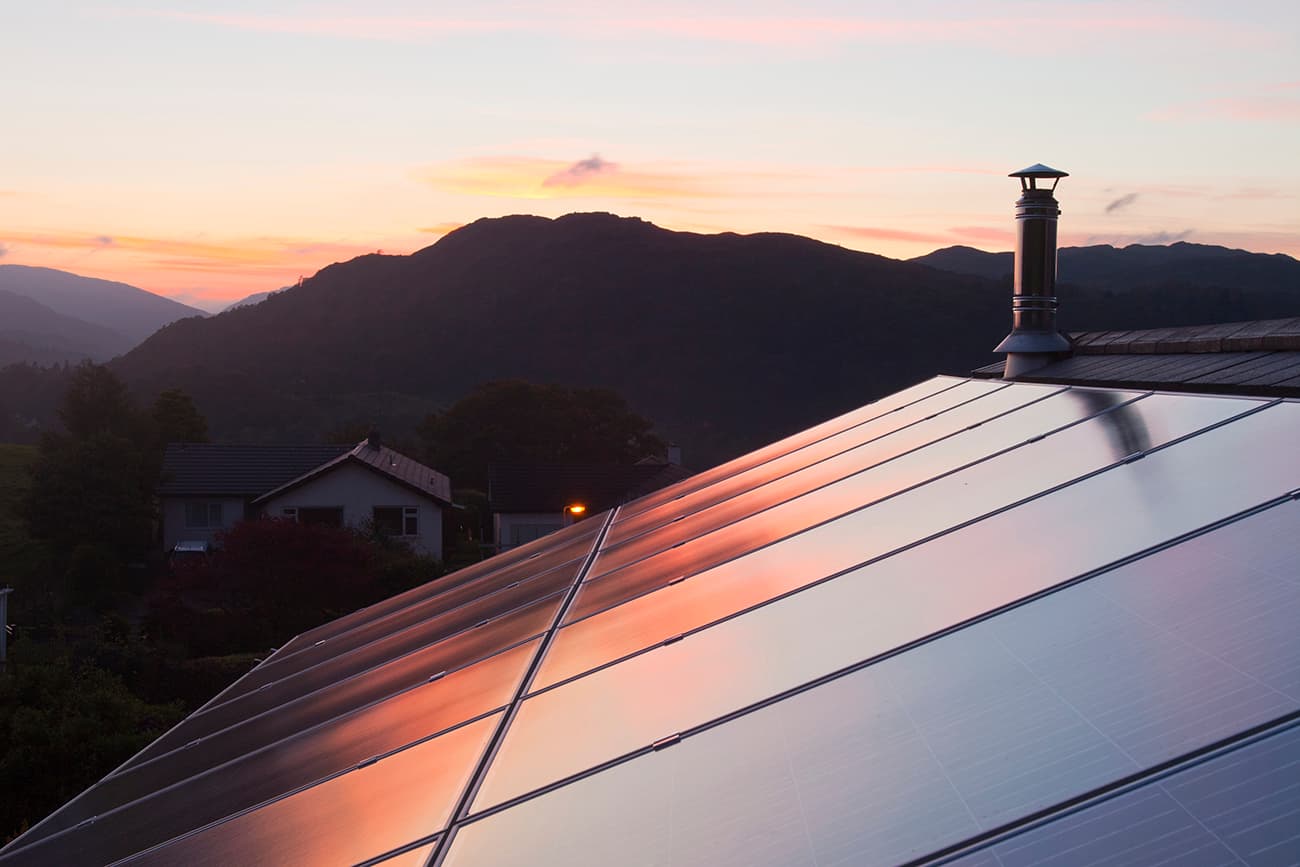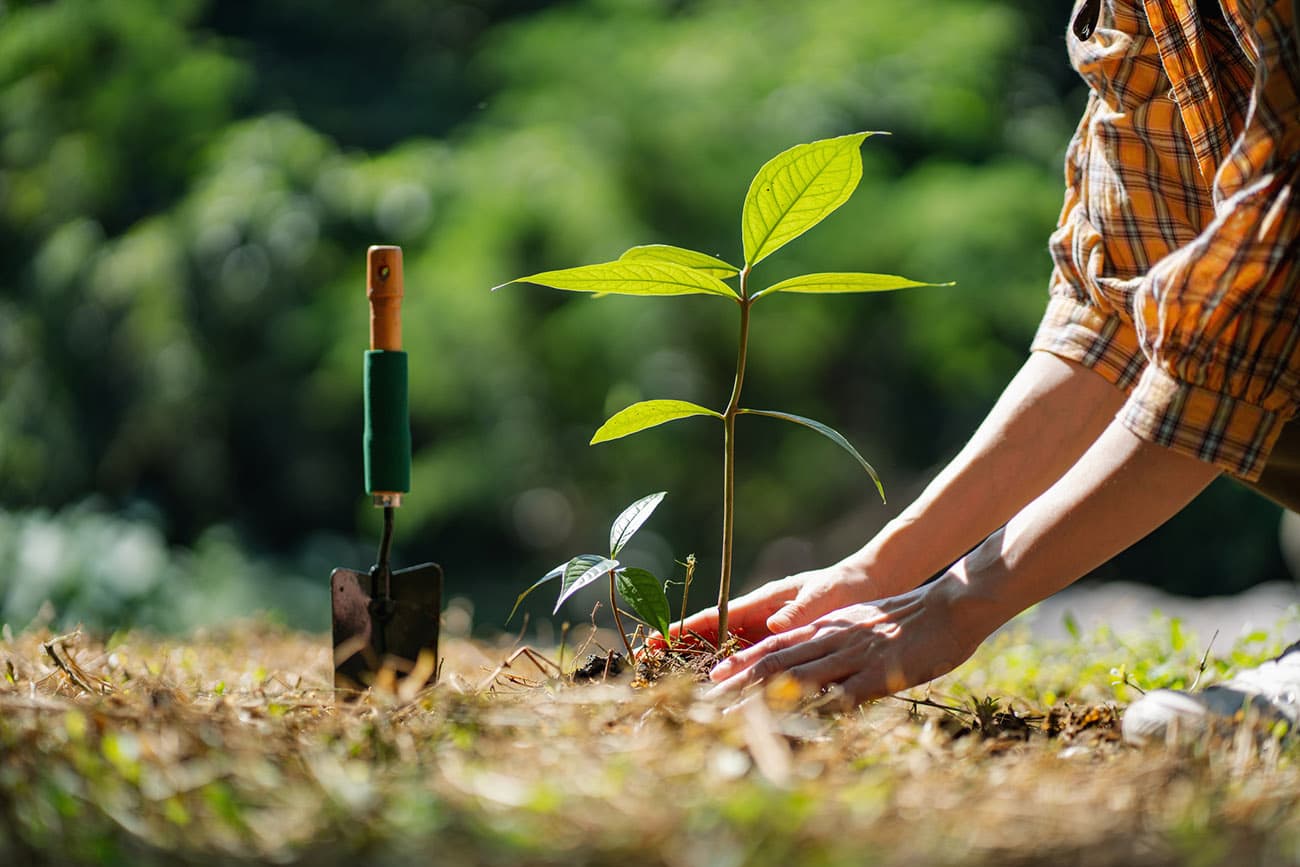NAR Library & Archives has already done the research for you. References (formerly Field Guides) offer links to articles, eBooks, websites, statistics, and more to provide a comprehensive overview of perspectives. EBSCO articles (E) are available only to NAR members and require a password.
REALTORS® & Sustainability Report
REALTORS® Residential Sustainability Report (National Association of REALTORS®, 2025)
NAR surveyed its residential-focused members about sustainability issues facing the industry and found that client interest in energy efficiency is increasing; green MLS data is underutilized; transportation convenience matter to clients; financial incentives drive demand; and the most important green features to client were windows, doors, and siding.
REALTORS® & Sustainability: Commerical Real Estate Report (National Association of REALTORS®, 2024)
NAR surveyed its members about sustainability issues facing the commercial real estate industry and found that a majority of commercial practitioners found energy efficient promotion valuable; 32% said that green building certifications increased commercial property values, and 55% were comfortable answering clients' questions about building performance and building features
Sustainability Resources, Toolkits, and Guides
Script for REALTORS® on Climate Risk (Sustainability Advisory Group, 2023)
"In 2023, the Sustainability Advisory Group requested this material to be placed on the NAR's Sustainability webpage to help NAR members answer questions from consumers, clients and potential homebuyers about the risks of climate change in their community. This "script" will help members guide consumers to the information they need to make informed decisions about their property purchase."
Green REsource Council (National Association of REALTORS®)
The website for NAR's GREEN designation
Home Energy Labeling Guidebook & Key Labeling Components (National Association of State Energy Officials)
The following documents were created to help local and state officials interested in implementing home energy labeling programs and/or policies. The Guidebook provides important information about critical steps and elements needed to establish a successful home energy labeling program or policy, while the Key Labeling Componentsdocument provides guidance on the information and metrics that should be included on all home energy labels to reduce market confusion and support home energy comparisons."
Smart Growth America
Smart Growth America "envisions a country where no matter where you live, or who you are, you can enjoy living in a place that is healthy, prosperous, and resilient. We empower communities through technical assistance, advocacy, and thought leadership to realize our vision of livable places, healthy people, and shared prosperity."
Appraisal Institute® Green Building Resources
Appraisal Institute offers a variety of resources centered on the valuation of sustainable properties.
Bringing Home Energy Information to Real Estate: A Toolkitpdf (US Department of Energy, 2018)
"This document helps readers interested in improving access to home energy information navigate the many resources, lessons learned, and best practices developed through the Home Energy Information Accelerator. Although written for an audience of energy program administrators and efficiency leaders, resources referenced in this document can be used by REALTORS®, appraisers, lenders, and homeowners directly. By centralizing these resources in one place, we hope to continue to accelerate these processes for easier implementation nationwide."
US Climate Resiliance Toolkit
"The U.S. Climate Resilience Toolkit is a website designed to help people find and use tools, information, and subject matter expertise to build climate resilience. The Toolkit offers information from across the U.S. federal government in one location. The goal of the site is to improve people's ability to understand and manage their climate-related risks and opportunities, and to help them make their communities and businesses more resilient to extreme events."
Resources for State and Local Associations
NAR's Land Use Initiative
This program is designed to assist state and local REALTOR® associations in their public policy advocacy of land use issues. Upon request, NAR will provide expert analysis of the legal, planning, economic, and environmental issues surrounding legislative and regulatory land use proposals.
Placemaking is a way to make your community a better place to live and work by transforming public spaces into vibrant community places. As a place becomes more desirable and welcoming, properties around that place increase in value. Funding for placemaking projects is available to state and local REALTOR® associations.
- Placemaking Grant: To help plan, organize, implement and maintain projects to improve a neighborhood with small, inexpensive, incremental projects which will help to make the neighborhood a better place to live, work and play.
- Smart Growth Action Grant: For larger Placemaking activities, such as Better Block and Main Street®, which support land-use related activities.
- Customized State Smart Growth Legislation Program
This program provides assistance to state REALTOR® associations that wish to take the lead in writing and introducing legislation to help the state better address the challenges of growth and improve local communities.
Sustainability Toolkit for State and Local Associations (National Association of REALTORS®)
"This Sustainability Toolkit is key to establishing, implementing, and building sustainability into your association. This resource will guide you through identifying your association's needs, building a plan to foster positive change, and specific actions and activities to help you meet your goals.Sustainability will help your association to not only champion environmental stewardship but also promote market-based approaches to benefit your members, homeownership, and resilient development."
Green Data Best Practicespdf (Council of Multiple Listing Services, 2024)
CMLS Best Practices bring together emerging and proven practices from across real estate to align and advance professional standards within the MLS industry.
Home Energy Information Guidepdf (Home Energy Information Accelerator, Council of Multiple Listing Services,
and National Association of REALTORS® Real Estate Standards Organization, 2017)
This guide helps real estate professionals and Multiple Listing Services make the value of efficiency investments visible to homeowners and buyers, even if the projects themselves are neatly hidden.
Sustainability in Real Estate
How Climate Risks are Impacting Real Estate Insurance Costs (JLL, Jan. 23, 2025)
"In the U.S., insurance is the fastest growing line item for building owners, with knock-on effects for operating incomes and longer-term asset values. In some high-risk coastal regions such as California and Florida, insurers have exited some local markets or limited their coverage following years of escalating losses. State-sponsored programs such as California's FAIR plan are a last resort, but the Los Angeles wildfires have raised questions over whether they can cover huge damage bills.
"Rising insurance costs are becoming a significant challenge for real estate owners, especially in markets facing direct climate hazards. Insurers traditionally accounted for a 2-3% annual increase in expenses, but premiums are rising much faster, driven by the escalating financial toll of climate events," says Jaime del Álamo, Head of ESG Value & Risk Americas, JLL."
Smart Buildings Keep Getting Smarter (CCIM, Fall 2024)
"Building owners/operators want to improve energy efficiency and lower operational costs, meet environmental regulations and ESG goals, enhance occupant safety/comfort, and provide digital amenities to draw tenants. All this makes a building more attractive to occupants and investors and boosts property value. "I think smart buildings are the future of office and commercial real estate in general," says Galvan. "There are so many aspects of intelligent infrastructure," says Timothy Churchwell, CCIM, Vice President of TEC Holdings, LLC. "A fire breaks out, and the elevator immediately shuts down, so safety issues exist. There are economic issues. There are energy efficiency issues." He says smart building technology is a must-have, especially in new construction. According to a recent Precedence Research report, the smart building technology market is booming and anticipated to expand at a CAGR of 10.9%, reaching $256.18 billion by 2033."
A Tale of Two Towns: A Case Study on Building Communities with Sustainability and Resiliency at the Forefrontpdf (Sustainability Advisory Group, Nov. 2024)
"In 2018, the Sustainability Advisory Group (SAG) was created to "evaluate, monitor, analyze, and implement means and methods for integrating sustainability into all aspects of residential and commercial real estate… [and to] provide information and proposed resources on sustainability-related issues to the NAR Leadership Team. "As part of their work providing information on sustainability-related issues, the SAG is exploring the impact of major natural disaster events on the local housing market and REALTOR®'s livelihood. In 2024, the SAG chose to do a case study of two communities: Greensburg, Kansas and Babcock Ranch, Florida. The research focuses on the sustainable rebuilding of Greensburg, Kansas after it was leveled by a tornado and the building of Babcock Ranch, Florida from the ground up to serve as a model sustainable and resilient community in the face of Florida's weather extremes. The research focuses on sustainable and resilient policies and building practices in residential, commercial, and town infrastructure, as well as the ways each town harnessed their most abundant renewable resources. Finally, the case study discusses opportunities, challenges, and actions for REALTORS® to be advocates for sustainable building in their communities."
UN Global Status Report for Buildings and Construction (United Nations Environmental Programme, Mar. 2024)
"The buildings and construction sector contributes significantly to global climate change, accounting for about 21 per cent of global greenhouse gas emissions. In 2022, buildings were responsible for 34 per cent global energy demand and 37 per cent of energy and process-related carbon dioxide (CO2) emissions. Despite a 3.5 per cent reduction in energy intensity, overall energy demand and emissions rose by about one per cent from 2021. Policy progress is evident with more comprehensive climate action plans covering buildings and construction in Nationally Determined Contributions (NDCs). However, few align with net-zero operational emissions, and while over 81 countries have building energy codes, many are outdated. Looking forward to 2024, the focus must be on tangible emission reductions, enhancing building performance, increasing renewable energy use and addressing housing and energy access disparities. Despite the complexities, strategic partnerships can facilitate the shift to an efficient, resilient and whole life net-zero carbon global building stock."
NAR Sustainability Advisory Group Market Transformation White Paper
"Written by the National Association of REALTORS® Sustainability Advisory Group, with input from the Appraisal Institute and the Council of Multiple Listing Services, recommends specific actions for state energy offices to consider when creating their Inflation Reduction Act rebate programs and required Market Transformation Plan. It includes a list of resources and tools already in the market that could scale with the programs. It also includes suggested strategies for partnering with REALTOR associations and other stakeholders to increase the impact of the rebate programs and solve for specific challenges agents face."
Disaster in Paradise (Sustainability Advisory Group, Nov. 2023)
"In 2018, the Sustainability Advisory Group(SAG) was created to "evaluate, monitor, analyze, and implement means and methods for integrating sustainability into all aspects of residential and commercial real estate...[and to] provide information and proposed resources on sustainability-related issues to the NAR Leadership Team." As part of their work providing information on sustainability-related issues, the SAG is exploring the impact of major natural disaster events on the local housing market and REALTOR®'s livelihood… in 2023 the SAG chose to study the impact of the 2018 Camp Fire on the housing of Paradise, California. The research focused on housing supply and price impacts, but the SAG chose to extend their research and pursue three central topics: 1. the ways the power grid infrastructure contributed to the fire and the role of power companies in natural disasters; 2. The preparedness of the community for a wildfire disaster; and 3. the rebuilding effort, particularly focusing on building codes, resilient building, and property maintenance."
Resiliance Design Toolkitpdf (American Institute of Architects)
"The Resilience Design Toolkit is a resilience design guide specifically developed for architects to understand the steps to coordinate resilience studies for a project and a general method to integrate resilience design thinking into a design process. The toolkit seeks to be a resource that provides relevant background information on the importance of resilience design and how to adopt or adjust a design method to fit a project's needs. The toolkit was born out of a research study at HKS to better understand the impacts climate can have on a project's useful life and then determine how we can mitigate those effects with design."
Can Cities Combat ‘Green Gentrification?' (Bloomberg, Nov. 10, 2022)
"The good news is that cities really are focusing on getting greener. In the face of a spiraling climate crisis, local leaders across the globe have bought into the idea that cities will need to plant trees, build flood-absorbent parks, and expand car-free streets in order to remain livable. But according to Barcelona-based researcher Isabelle Anguelovski, cities have yet to internalize the consequences of a growing divide: In city after city, she argues, new green infrastructure has brought real estate speculation, rising housing costs and community displacement."
"The Duty to Serve regulation implements the duty under the Federal Housing Enterprises Finance Safety and Soundness Act of 1992, as amended (12 U.S.C 4565) for Fannie Mae and Freddie Mac to serve three specified underserved markets – manufactured housing, affordable housing preservation, and rural housing – in order to increase the liquidity of mortgage investments and improve the distribution of investment capital available for mortgage financing for very low-, low-, and moderate-income families in those markets."
Resource Efficient Homes and Mortgages
Guide to Sustainable Living (Consumer Reports, Nov. 22, 2025)
Find reviews and guides to "eco-friendly products and simple solutions for a green home."
Your Cheat Sheet to Lowering Energy Bills and Creating a Greener Home (CNET, Aug. 10,, 2025)
"It's never too late to make your home more energy-efficient and the payoff goes beyond helping the planet. Simple changes can also lead to noticeable savings on your utility bills. Over the years, CNET's experts have shared a wealth of tips on everything from solar power to everyday energy-saving habits. We've pulled together the best of that advice into one handy cheat sheet to help you live more sustainably and save money while you're at it."
Energy Incentives for Individuals: Residential Property Updated Questions and Answers (IRS, May 29, 2025)
"[T]he residential energy efficient property credit allows for a credit equal to the applicable percent of the cost of qualified property. Qualifying properties are solar electric property, solar water heaters, geothermal heat pumps, small wind turbines, fuel cell property, and, starting December 31, 2020, qualified biomass fuel property expenditures paid or incurred in taxable years beginning after that date. Only fuel cell property is subject to a limitation, which is $500 with respect to each half kilowatt of capacity of the qualified fuel cell property. Generally, this credit for alternative energy equipment terminates for property placed in service after December 31, 2023.
Instructions for IRS Form 5695: Residential Energy Credits (IRS, Dec. 12, 2024)
Use Form 5695 to figure and take your residential energy credits, including the residential clean energy credit and the energy efficient home improvement credit.
Database of State Incentives for Renewables & Efficiency (DSIRE/NC Clean Energy Technology Center)
"DSIRE is the most comprehensive source of information on incentives and policies that support renewables and energy efficiency in the United States. Established in 1995, DSIRE is operated by the N.C. Clean Energy Technology Center at N.C. State University and receives support from EnergySage."
About Green Homes (U.S. Green Building Council, 2024)
"LEED homes are designed and constructed to provide a safe, healthy and sustainable place to live. They provide cleaner indoor air, save on energy and water, maintain their value over time, and prioritize the use of materials that promote health and enhance resilience. LEED homes deliver at least 15% in energy savings compared to homes built to code and 20% in water savings."
Earning the New Energy-Efficient Home Tax Credit (U.S. Green Building Council, June 28, 2024)
"The Inflation Reduction Act (IRA) of 2022 enhances and creates new tax incentives for buildings and energy efficiency programs with the goal of reducing carbon emissions and creating jobs and other economic activity in the United States. For homebuilders, the new and improved Internal Revenue Code Section 45L New Energy Efficient Home tax credit (45L) under the IRA creates significant new incentives for new or substantially reconstructed energy-efficient homes. The IRA amended and extended 45L to increase the tax credit to up to $2,500 per unit for homes that meet Energy Star certification and up to $5,000 for homes achieving the Department of Energy's Zero Energy Ready Home certification. The incentive is in effect for 10 years, applying to homes that are acquired—sold or leased—from 2023 through 2032. Multifamily projects only (not single-family or manufactured houses) must meet federal prevailing wage requirements to be eligible for the full $2,500 Energy Star credit per unit and $5,000 ZERH credit per unit."
Want a More Energy-Efficient Home? A Green Mortgage Can Help You Pay for It (CNET, March 18, 2024)
"A green mortgage is a loan for homeowners who want to live in a property that doesn't require a massive drain on Earth's resources. While governments and corporations debate how to meet the needs of the planet, you can play your part as a homeowner by upgrading your older home or buying a new one that focuses on energy efficiency. EEMs are best suited for buyers looking to invest in cost-effective technologies or to save on utility bills over the long term. Though it can often require a bigger investment, an eco-friendly property can have worthwhile benefits."
Efficient Home Design (US Department of Energy)
"Before you design a new home or remodel an existing one, consider investing in energy efficiency. You'll save energy and money, and your home will be more comfortable and durable. The planning process is also a good time to look into a renewable energy system that can provide electricity, water heating, or space heating and cooling. You may also want to explore your options for financing an energy-efficient home. In an existing house, the first step is to conduct a home energy assessment (sometimes referred to as an energy audit) to find out how your home uses energy and determine the best ways to cut energy use and costs. To learn more about home energy assessments and find free tools and calculators, go to Your Home's Energy Use, the Residential Services Network, and the Building Performance Institute."
Energy Efficient Mortgages (Energy Star)
A discussion of the three types of Energy Efficient Mortgages: conventional, FHA, and VA. Conventional EEMs are obtained through Fannie Mae, Freddie Mac does not have an EEM program. FHA EEMs "enable homeowners to finance energy efficient improvements with their FHA-insured mortgages." VA EEM loans are available to "qualified military personnel, reservists, and veterans for energy improvements when purchasing an existing home."
GreenCHOICE Mortgages (Freddie Mac)
"Freddie Mac believes that reducing home utility costs places families in a better financial situation and helps preserve home affordability over time. Through our GreenCHOICE Mortgage® offering, we are committed to facilitate the financing of energy efficient home improvements and energy efficient homes, helping more families attain and maintain home affordability. Finance energy efficient improvements with any mortgage product, property type and financing terms up to 30 years to provide greater affordability for borrowers, offer more flexibility and combine the flexibilities of Home Possible Mortgages to offer borrowers additional affordable financing opportunities."
How to Get a VA Energy Efficient Mortgage (EEM) (Veterans United, Nov. 17, 2022)
"Investing in upgrades and technologies that boost energy efficiency can save homeowners a healthy chunk of change in the long run. As with other lending options, VA borrowers can look to obtain an Energy Efficient Mortgage (EEM), which allows qualified buyers to add to their purchase or VA Streamline (IRRL) refinance loan the cost of acceptable energy improvements."
Energy Efficient Mortgage Program (United States Department of Housing and Urban Development)
"In 1992, the Department of Housing and Urban Development initiated the Energy Efficient Mortgage as pilot demonstration in five states. In 1995, the pilot was expanded as a national program… Under its EEM program, FHA Insures a borrower's mortgage used to purchase or refinance a principal residence, and the cost of energy efficient improvements to be made to the home. The borrower need only qualify for the loan amount used to purchase or refinance a home. The borrower is not required to be qualified on the total loan amount with the portion of loan used to finance energy efficient improvements… After the mortgage closes, FHA insures the loan to protect the lender against loss in the event of payment default."
Green Financing Loans (Fannie Mae)
"Fannie Mae has a suite of Green Mortgage Loan products that benefit borrowers who invest in energy and water efficiencies, including preferential pricing and additional loan proceeds for energy and water efficiency retrofits." These tools include the "Go Green Flowchart," "Green and Healthy Housing Financing Options and Incentives," and case studies about borrowers who use Green Financing Loans.
Commercial Green Buildings
Commercial Property Assessed Clean Energy (US Environmental Protection Agency, 2025)
"C-PACE programs may provide financing for commercial projects such as multifamily residential properties, commercial properties, industrial buildings, or nonprofit properties. Programs may vary based on the governmental sponsor (statewide vs. local programs), financing structures, and eligible measures. As of 2022, more than 38 states plus the District of Columbia have C-PACE-enabling legislation and 30 states plus the District of Columbia have active programs. There has been more than $4 billion in investment in over 2,900 commercial projects as of November 2022."
Green Building Trends and Drivers for US Commercial Real Estate Investors (US Green Building Council, Jul. 18, 2024)
"Due to mounting transition and physical climate risks, institutional commercial real estate investors are increasingly prioritizing sustainability and climate risk mitigation in their portfolios. To this end, investors are focused on understanding the impact of regulations, attaining regulatory compliance and underwriting physical risk mitigation through insurance."
Sustainable Buildings: Designing, Building, and Operating to Help Create a Greener Futurepdf (Deloitte, 2023)
"The industry's trifecta of potential solutions – sustainable materials, sustainable methods, and sustainable models – can help drive sustainable buildings. This article provides some approaches and recommendations for the engineering and construction industry to consider to help achieve the customer goals of lowering carbon footprint from buildings within the bounds of realistic capital expenditure."
As Risks of Climate Change Rise, Investors Seek Greener Buildings (The New York Times, Oct. 26, 2021)
"The most important use of this technology is likely to be in evaluating and retrofitting existing buildings. Fund managers will need to understand which ones can be updated to met new standards and regulations and which ones are likely to become stranded assets, an increasingly tricky calculation as building technology matures."
'Cool' Roofs, Cooler Designs as the Building Industry Embraces Energy Sustainability (The Washington Post, Jun. 8, 2021)
"In Mazria's view, building "green" is not a hard sell, especially given cost-effective design approaches that can produce high-performance buildings with little to no energy consumption or emissions. Strategies include considering a structure's shape and orientation on a site, adding "cool" roofs that reflect more sunlight and absorb less heat, and more. "In 50 years, I've never heard a client say they want an inefficient building that costs more to operate and damages the environment," Mazria said."
Amid Soaring Demand for Warehouses, an Effort to Make Them Greener (The New York Times, Apr. 12, 2022)
"Warehouses and distribution centers — which typically have big, open interiors devoted to storage with a small amount of square footage dedicated to office functions — would appear to be easier to make greener than other real estate. Many of them take only a modest amount of energy to run, compared with more densely occupied structures such as office buildings or hotels."
Prescription for Healthier Building Materials: A Design and Implementation Protocopdfl (American Institute of Architects, 2018)
"A growing body of environmental studies and reports demonstrates the connection between chemical exposure from certain materials and human health. This offers a big opportunity—and strong motivation—for architects and designers to more carefully consider the materials they choose, and for owners and facility managers to be more selective in the products they authorize for purchase or buy directly."
The Value of Green Leases (Institute for Market Transformation)
Our analysis found that green leases have the potential to enable over 17% of site energy savings. Implementing green leases across all U.S. office buildings would result in over $2.2 billion in energy savings and over 499,100 metric tons of CO₂ avoided.
Penn State Center for Green Roof Research
The Center, the only location in North America with small test green roofs on replicated buildings, characterizes and quantifies the performance of green roofs and promotes their discoveries through education and outreach.
ENERGY STAR Commercial Buildings
When you achieve Designed to Earn the ENERGY STAR, you get access to a suite of marketing materials to help you distinguish your building as designed to be a top energy performer … meaning it will use less energy, cost less to operate, and generate fewer greenhouse gas emissions than a similar building.
Greenroofs.com
Updated daily, Greenroofs.com is a dynamic interactive website, online media company, vibrant social network, and comprehensive resource Connecting the Planet + Living Architecture promoting People, Projects & Solutions.
U.S. Green Building Council (USBGC)
The USBGC, the leading organization for green building in the U.S., administers the LEED (Leadership in Energy and Environmental Design) Green Building Rating System®. Their website features information on LEED certification, publications, information on workshops and other events, and more.
To search the U.S. Green Building Council's membership community of over 12,000 business, organizations, and government offices that support green design, check out their Organizations Directory.
World Green Building Council
Green Building Councils are independent, non-profit organisations made up of businesses and organisations working in the building and construction industry. As members of WorldGBC, they work to advance green building in their own countries, as well as uniting with other Green Building Councils to achieve environmental, economic and social goals on a larger, global scale.
Green Building Initiative
A 501c3 nonprofit organization, the GBI is dedicated to accelerating the adoption of building practices that result in energy-efficient, healthier and environmentally sustainable buildings.
Solar Energy
Solar Explained (U.S. Energy Information Administration)
Solar photovoltaic (PV) devices, or solar cells, change sunlight directly into electricity. Small PV cells can power calculators, watches, and other small electronic devices. Arrangements of many solar cells in PV panels and arrangements of multiple PV panels in PV arrays can produce electricity for an entire house. Some PV power plants have large arrays that cover many acres to produce electricity for thousands of homes.
Solar Energy Basics (National Renewal Energy Laboratory)
More energy from the sun falls on the earth in one hour than is used by everyone in the world in one year. A variety of technologies convert sunlight to usable energy for buildings. The most commonly used solar technologies for homes and businesses are solar photovoltaics for electricity, passive solar design for space heating and cooling, and solar water heating.
PVWatts Calculator (National Renewable Energy Laboratory)
Estimates the energy production and cost of energy of grid-connected photovoltaic (PV) energy systems throughout the world. It allows homeowners, small building owners, installers and manufacturers to easily develop estimates of the performance of potential PV installations.
Solar Panels Now Boost Home Values by Up to $79,000 (EnergySage, Oct. 22, 2025)
"Think solar panels only add a modest bump to your home's value? Think again. New research analyzing 5,000 California home sales shows that solar installations are driving property value increases of 5% to 10%—more than double previous estimates. For the average $790,000 California home, that's an eye-popping $39,500 to $79,000 boost in resale value. This isn't just about monthly electric bill savings anymore. The data shows solar panels have become one of the most valuable home improvements you can make, delivering returns that exceed traditional renovations while providing decades of energy independence."
US Distributed Solar and Storage Data (Berkeley Lab, 2025)
"Berkeley Lab collects, cleans, and publishes project-level data on distributed (residential and non-residential systems) solar and distributed solar+storage systems in the United States. The data are compiled from a variety of sources, including utilities, state agencies, local permitting agencies, property assessors, and others. The latest update contains data on roughly 4.5 million individual systems installed through the end of 2024 and provides project-level data covering a wide range of system technical characteristics, installed prices, financing and installer level data, and customer segmentation details, including estimated household incomes."
Benefits of Residential Solar Electricity (US Department of Energy)
"Solar energy is renewable and plentiful. As the cost of using solar to produce electricity goes down each year, many Americans are increasingly switching to solar. Now, there are over a million solar installations across the country. Read about additional benefits of switching to solar electricity."
Trails and Greenways
The ROI on Parks, Trails, and Other Green Infrastructure is Getting Much Clearer (On Common Ground, Nov. 12, 2025)
"It's not just rails to trails – the practice of converting unused railroad lines to biking and hiking trails – that have a strong economic return on investment. Parks, trails not converted from rail lines, and other green infrastructure all have paybacks in new-business creation, reducing health care costs, and so much more. Making that case hasn't been easy — until recently. There's now a growing body of research and real-life examples showing that these investments have huge payoffs."
Bicycling and Walking in the United States: Benchmarking Progress (The League of American Bicyclists)
"The Benchmarking Project provides data on bicycling and walking for all 50 states, and 76 cities made up of the 50 most populous cities in the United States, the most populous city for every state whether or not it is one of the 50 most populous in the country, and every Platinum Bicycle Friendly Community. The data provided in the Benchmarking Project comes from the federal government, survey responses from state and city officials, and national non-profit organizations."
Greenways and Multiuse Trails Create Paths for People (Land Trust Alliance, Jun. 4, 2024)
"Greenways used to be the realm of parks and rec departments or other municipal agencies. But nationwide, land trusts are becoming more and more involved in greenways and multiuse trails. And not just as amenities for the few, but as essential infrastructure for connecting communities."
What are Greenways and Why are They Important? (CRSA)
"Often called a linear park, a greenway is a long linear system of public open space, established along either a natural corridor, such as a river, stream valley, or ridgeline, or overland along a railroad converted to recreational use as a scenic route. Greenways are usually planned for environmental protection, and they often provide opportunities for recreation and active transportation."
Why Trails Matter: Trails and Greenways Promote Health (American Trails, Feb. 1, 2024)
"Trails and greenways create healthy recreation and transportation opportunities by providing people of all ages with attractive, safe, accessible and low- or no-cost places to cycle, walk, hike, jog or skate."
Benefits of Trails (Rails to Trails Conservancy, 2024)
"The U.S. Centers for Disease Control and Prevention (CDC), a past sponsor of Celebrate Trails Day, reports that 25% of Americans are inactive and that increasing our physical activity is one of the best things we can do for our health. Findings from the Community Preventive Services Task Force recommends parks, trails and greenways as infrastructure interventions that increase physical activity. These improvements, however, need to be combined with community engagement to increase awareness, expand programs and enhance access."
Parks, Trails, and Greenways for Physical Activity: A Community Guide Systematic Economic Reviewpdf (American Journal of Preventive Medicine, 2024)
The systematic economic review found that economic benefits exceed the cost for park, trail, and greenway infrastructure interventions. The research presented in this paper can help inform communities and decision makers about the economic merits of these infrastructure projects to improve public health.
Rail Trails and Housing Values: A Longitudinal Study (Tourism, Dec. 30, 2022)
"…it is clear that proximity to greenways, and in this case a rail trail, certainly influence home values in a positive manner at least for the recovery period following the recession."
Impact on Property Values of Distance to Parks and Open Spaces: An Update Of U.S. Studies in the New Millenniumpdf (Journal of Leisure Research, Aug. 12, 2019)
"The results suggested a premium of 8%–10% on properties adjacent to a passive park is a reasonable point of departure, which is lower than suggested by previous guidelines. Four additional insights emerged: Percentage premiums were higher for (a) multifamily or small lots than for single-family homes or large lots and (b) for permanently protected lands than for developable lands; recognition was frequently lacking (c) the heterogeneity of open space and (d) differentials among submarkets. Six managerial conclusions and five guidelines for future research are offered."
American Trails
American Trails "connect organizations, agencies, and communities with the education, data, and people they need to create an extensive infrastructure of easily accessible, well-maintained trails and greenways in cities, rural areas, and wild places across the nation."
Rails to Trails Conservency
"Rails to Trails Conservancy is building a nation connected by trails, reimagining public spaces to create safe ways to be active outdoors. We invite you to explore with us—find your next trail adventure. Find new ways to take part in the advocacy to reimagine public spaces, creating safe ways for everyone to walk, bike and be active outdoors. Discover why your time on the trail is so much more than a day outside."
Water Rights & Resource Issues
Water Use in US Data Centers: Legal and Regulatory Risks (Nixon Peabody, Sep. 5, 2025)
"As the digital economy expands with rapid scaling of artificial intelligence (AI), cloud computing, and digital infrastructure, data center operations are increasingly scrutinized for their environmental impacts. Among the most pressing concerns is water consumption, a resource-intensive aspect of data center operations now drawing attention from state lawmakers, regulators, and environmental stakeholders, particularly in water-scarce regions. This article highlights how technology companies operating data centers face increasing legal exposure related to water use disclosures, community impact, and environmental compliance, and discusses how the evolving regulatory landscape presents both compliance risks and reputational challenges."
How We Use Water (US Environmental Protection Agency, Aug. 22, 2025)
"In the US, we are lucky to have easy access to some of the safest treated water in the world—just by turning on the tap. We wake up in the morning, take a shower, brush our teeth, grab a cup of coffee, and head out for the day. Water is an important part of our daily lives and we use it for a wide variety of purposes, but do we really understand how much we use?"
The Colorado River Crisis: Water Shortages, Climate Change, and Sustainable Management (Penn State Institute of Energy and the Environment, Sep. 18, 2025)
"The primary challenge is how water is allocated. The Colorado River Compact, established more than 100 years ago, divided the river's water between the upper and lower basin states. However, the compact overestimated the river's water supply, allocating more water than what is actually available. This issue has been exacerbated by a two-decade-long drought, meaning that not only did we never have as much water as planned, but we now have even less. Reservoirs are at historic lows, and at the same time, demand is increasing due to higher temperatures and drier conditions. Everyone feels they are not getting what they were promised, creating tensions among stakeholders."
Indian Water Rights Settlements (US Department of the Interior)
"The intent of Indian water rights settlements is to aid in securing Tribal and individual Indian rights to historic Tribal land and ensuring permanent access to clean, reliable water supplies. To support these goals, DOI negotiates and supports implementation of Indian water rights settlements. Settlements often end decades of controversy and contention among Tribes and neighboring communities. Many of the projects supported in settlement agreements bring clean and potable water to Tribal communities, while other projects repair crumbling irrigation and water delivery infrastructure on which Tribal economies depend."
Water Use in the United States (US Geological Survey, 2023)
"The USGS collaborates with local, state, and federal partners to gather and incorporate water-use data with other datasets covering climate, population, geography, system characteristics, land use, social factors, and economics. This information is then integrated into a modeling framework to generate national estimates of water withdrawal and consumption (evapotranspiration of withdrawn water) from both groundwater and surface-water sources. These estimates are crucial for understanding how water is used and for assessing the balance between water supply and demand. Models also enable more frequent availability of water use estimates, quicker identification of data errors, and a consistent approach to evaluating uncertainty. This improved understanding of the factors influencing water use supports the forecasting of water use under varying climate and socio-economic scenarios."
Coastal Sea Levels in U.S. to Rise a Foot by 2050, Study Confirms (The New York Times, Feb. 16, 2022)
In a report released by the National Oceanic and Atmospheric Administration (NOAA) it was found that, regardless of mitigating efforts, the sea-level will rise at least one foot by the year 2050. About 40% of United States citizens live within 60 miles of the ocean, many of whom will be in danger of more destructive storm surges, tides, and coastal floods. The report, which was meant to help government officials, city planners, and engineers think about infrastructure, will hopefully serve as a blueprint for future action.
Water Education for the REALTOR® & Consumerpdf (Land Use, Property Rights, and Environment Committee, 2024)
The Land Use, Property Rights, and Environment Committee of NAR created a resource for REALTORS® and consumers about water quality issues. The resource gives definitions and facts about PFAs, Potable Water, National Test Sites for Water, Septic Systems & Water, and WOTUS (Waters of the US).
Waters of the United States (US Environmental Protection Agency)
Waters of the United States defines the waters that the US is responsible for implementing programs, including Water Quality Standards, Total Maximum Daily Loads (TMDLs) and sections 311, 402, and 404 under the Clean Water Act.
American Water Resources Association
"Established in 1964, the American Water Resources Association (AWRA) is the preeminent multidisciplinary association for information exchange, professional development and education about water resources and related issues."
National Groundwater Association
"NGWA's vision is to be the leading groundwater association advocating the responsible development, management, and use of water."
American Water Works Association
"The American Water Works Association is an international, scientific, and educational 501(c)(3) nonprofit organization dedicated to a better world through better water."
Water Infrastructures Issue Summary (National Association of REALTORS®)
"NAR has not adopted an official position on this issue; however, state and local REALTOR® associations may adopt official positions for water infrastructure."
Water Resources and Water Quality Issue Summary (National Association of REALTORS®)
"NAR supports using appropriate scientific criteria to identify regulated areas, keeping the focus on preserving high value waters subject to Clean Water Act regulations; and requiring that local officials and affected property owners be notified in a timely manner about the presence of these waters.
NAR supported Supreme Court decisions to reject federal agency attempts to assert jurisdiction beyond navigable waters to all waters."
Wind Farms
A Decade of Growth for U.S. Solar and Wind (Climate Central, Mar. 12, 2025)
"In 2024, the U.S. generated a record 756,621 gigawatt-hours (GWh) of electricity from solar and wind — enough to power the equivalent of more than 70 million average American homes. This is more than triple the amount generated a decade ago, in 2015. Globally, solar and wind are the fastest-growing sources of electricity in history."
U.S. Wind Power Faces Huge Challenges After Trump Orders a Crackdown (The New York Times, Jan. 21, 2025)
"The order, which Mr. Trump signed in the Oval Office on Monday night, would halt all leasing of federal lands and waters for new wind farms pending a fresh government review of the industry. It also directs federal agencies to stop issuing permits for all wind farms anywhere in the country for the time being, a move that could disrupt projects on private land, which sometimes need federal wildlife or other environmental permits. While the order does not call for a freeze on wind projects that are already under construction, Mr. Trump directed the U.S. Attorney General and secretary of the interior to explore the possibility of "terminating or amending" any leases that have already been issued. That means projects that have already received federal approvals could face new hurdles."
The Visual Effect of Wind Turbines on Property Values Is Small and Diminishing in Space And Time (Proceedings of the National Academy of Sciences, Jan. 10, 2024)
"Wind power is the fastest-growing renewable source of electricity in the United States. It has been argued that wind turbines are a visual disamenity. We statistically estimate the impact of having at least one wind turbine within sight on home values, using data from more than 300 million home sales and 60,000 wind turbines in the United States from 1997 to 2020. We find robust evidence of a 1% drop of home values within a wind turbine's view shed. The effect is larger for homes closer to more wind turbines, but is no longer detectable by the end of the 20-year period covered by our data."
Commercial Wind Turbines and Residential Home Values: New Evidence from the Universe of Land-Based Wind Projects in the United States (Berkeley Lab, Dec. 7, 2023)
"We examine the impact of proximity to land-based commercial wind turbines on residential home values in the United States using data on the universe of commercial wind turbines and residential property transactions from 2005 to 2020. We find that, on average, homes located within 1 mile of a commercial wind turbine experience approximately an 11% decline in value following the announcement of a new commercial wind energy project, relative to counterfactual homes located 3 to 5 miles away. Event study estimates also reveal important dynamics in the evolution of home values, with property values first declining following project announcement, and then recovering post project construction, with property value impacts becoming relatively small (~ 2%) and statistically insignificant 9 years or more after project announcement (roughly 5 years after operation began). Homes located within 1 to 2 miles of a commercial wind turbine experience much smaller impacts and homes located farther than 2 miles away are unaffected. Our results are primarily driven by wind projects located in "urban" counties in metro areas with populations greater than 250,000."
Wind Power Facts (American Clean Power Association)
"Today, more than 70,000 wind turbines across the country are generating clean, reliable power. Wind power capacity totals 146 GW, making it the fourth-largest source of electricity generation capacity in the country. This is enough wind power to serve the equivalent of 46million American homes." This resource from American Clean Power Association, includes reports, facts, and answers to some common wind power questions.
How a Wind Turbine Works (United States Department of Energy)
"Wind turbines operate on a simple principle. The energy in the wind turns two or three propeller-like blades around a rotor. The rotor is connected to the main shaft, which spins a generator to create electricity."
Wind Energy Technologies Office Projects Map (US Department of Energy, 2023)
This map shows wind energy projects that the Department of Energy's Wind Energy Technologies Office has in it's portfolio.
The U.S. Wind Turbine Database (U.S. Geological Survey, Lawrence Berkeley National Laboratory & the American Wind Energy Association)
The United States Wind Turbine Database (USWTDB) provides the locations of land-based and offshore wind turbines in the United States, corresponding wind project information, and turbine technical specifications. The creation of this database was jointly funded by the U.S. Department of Energy (DOE) Wind Energy Technologies Office (WETO) via the Lawrence Berkeley National Laboratory (LBNL) Electricity Markets and the American Wind Energy Association (AWEA).
Wind Maps (National Renewable Energy Laboratory)
This collection of wind maps and assessments details the wind resource in the United States.
Wind Energy Technologies Office: WINDExchange (US Department of Energy)
The WINDExchange is a resource provided by the US Department of Energy's Wind Energy Technologies Office. It helps "communities weigh the benefits and impacts of wind energy." You can search by state, utility scale wind (land-based or offshore), or by distributed wind (community or residential). They have resource maps, project development information, and technical models, tools, and guidebooks.
American Clean Power Association
ACPA is a national trade association representing companies and individuals involved in the wind power industry. It promotes wind energy as a clean source of electricity for consumers around the world. The organization website does a good job addressing opposition to wind farms.
National Wind Institute
Texas Tech University's National Wind Institute (NWI) is based on a strong foundation of more than 40 years of research and education on the impact of wind on structures and human life.
Alliance for Wise Energy Decisions
"The purpose of this site is to sort through many thousands of articles, studies and reports on energy matters, select a representative cross-section of informative material, and then organize it in an understandable manner." Offshore wind is one of the many topics covered on this website.
Industrial Wind Action Group
Industrial Wind Action is "dedicated to providing information on industrial wind energy to enable communities and government officials to make informed decisions."
Books, eBooks & Other Resources
The following books, eBooks, and audiobooks are available to NAR members:
A Practical Guide to Green Real Estate Management (Chicago: IREM, 2009) NA 2542 K6
A Solar Buyer's Guide for the Home and Office (eBook)
City Parks (eBook)
Conservation for Cities (eBook)
Cycling for Sustainable Cities: Urban and Industrial Environments (eBook)
Energy-efficient Mortgages and Home Energy Rating Systems: a Report on the Nation's Progress (National Renewable Energy Laboratory, 1993) QC 73.8 N21ee
Essential Sustainable Home Design (eBook)
Green Building Through Integrated Design (eBook)
Green Buildings A to Z (eBook)
Green Buildings Pay (London: Spon Press, 2003) NA 2542 G72
Green Business Practices for Dummies® (eBook)
Green Building Products (eBook)
Greening the Wind (Audiobook, eBook)
Healthy Buildings (eBook, Audiobook)
Home Sweet Zero Energy Home (eBook)
How to Design and Build a Green Office Building (eBook)
Install Your Own Solar Panels (eBook)
Land Use Law for Sustainable Development (eBook)
Lease Guide: Guide to Writing a Commercial Real Estate Lease including Green Lease Language (Chicago: BOMA International, 2008) HD 1384 T23
Making Better Buildings (eBook)
On Common Ground (National Association of REALTORS®)
Parks & Recreation System Planning: A New Approach for Creating Sustainable, Resilient Communities (eBook)
Power from the Sun (eBook)
Power From the Wind (eBook)
Reinventing Green Building (eBook)
Residential Green Valuation Tools (Appraisal Institute, 2014) HD 1387 A36
Retrofitting Office Buildings to Be Green and Energy-Efficient (eBook)
Routledge Handbook of Sustainable Real Estate (Abingdon, Oxford: Routledge, 2018) HD1390 .R684 2018
Smart Green: How to Implement Sustainable Business Practices in Any Industry—And Make Money (eBook)
Sustainable Energy Systems in Architectural Design (eBook)
Sustainable Design (eBook)
Sustainable Facilities (eBook)
Sustainable Property Development (eBook)
The Clean Water Act Handbook, 2nd ed. (Chicago, IL: American Bar Association, 2003) KF 3790 C54
The Complete Idiot's Guide to Greening Your Business (eBook)
The Complete Idiot's Guide to Solar Power for your Home (eBook)
The Green Building Bottom Line (eBook)
The Green Building Revolution (Washington: Island Press, 2008) TH880 .Y634 2008
The Homeowner's Energy Handbook (eBook)
The Homeowner's Guide to Renewable Energy (eBook)
The Little Green Book: Green Rules to Live By for REALTORS® (Available for purchase from the REALTOR® Store)
The Philosophy of Sustainable Design: The Future of Architecture (Kansas City, MO: Ecotone Publishing, 2004) NA 2542 M35
The Solar House: Passive Heating and Cooling (eBook)
Urban Forests (eBook)
Urban Design Made by Humans (eBook)
Water Rights & the Environment in the United States (eBook)
Waterwise House & Garden A Guide for Sustainable Living (eBook)
When the Rivers Run Dry (eBook)
Wind Power Basics (Audiobook, eBook)
Wind Power for Dummies (Audiobook, eBook)
Have an idea for a real estate topic? Send us your suggestions.
The inclusion of links on this page does not imply endorsement by the National Association of REALTORS®. NAR makes no representations about whether the content of any external sites which may be linked in this page complies with state or federal laws or regulations or with applicable NAR policies. These links are provided for your convenience only and you rely on them at your own risk.














